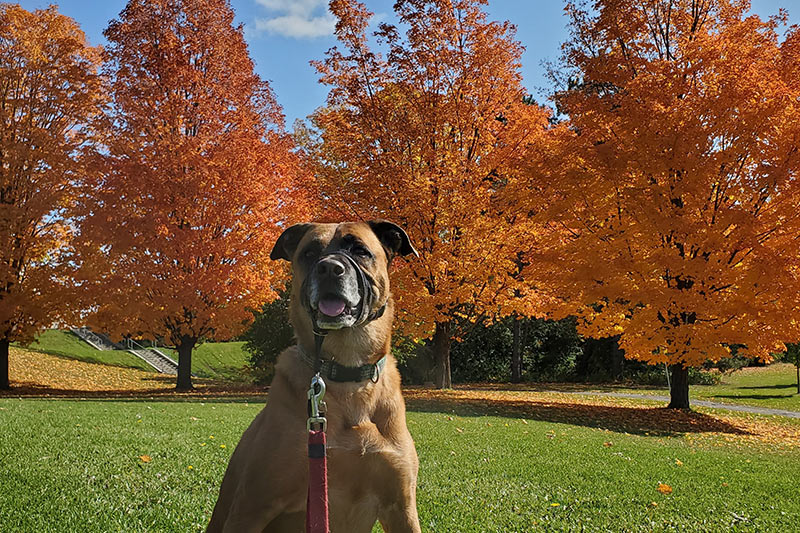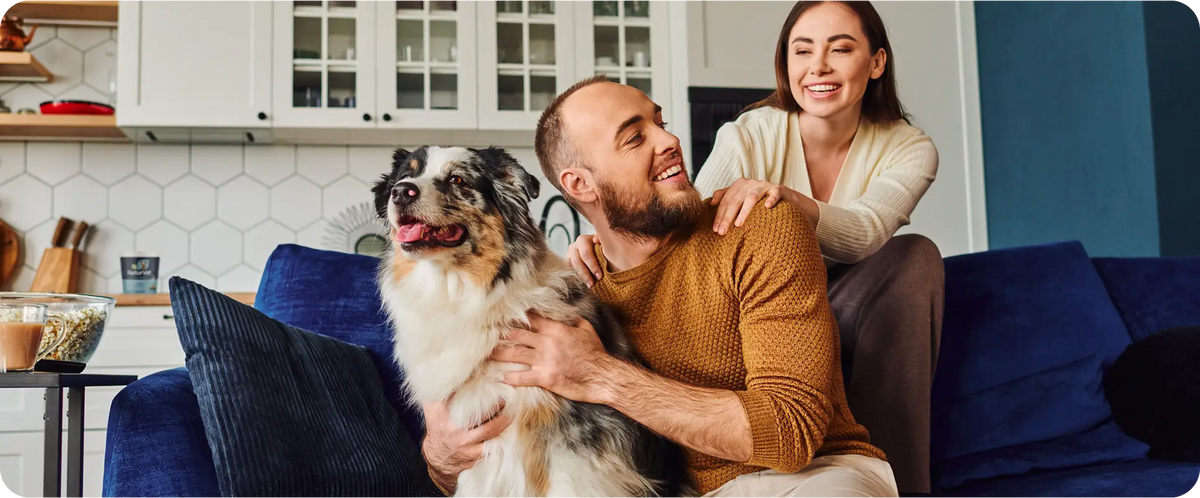How To Socialize A Dog
Socializing your dog is an essential aspect of developing a friendly, properly functioning member of the canine community.
Ideally, puppies are socialized in their first few months of life by being exposed to a wide range of activities involving other dogs and humans by the time they’re 12 weeks old.
However, as every dog's journey is unique, this does not always happen, which can leave pet parents faced with the challenge of having to socialize their adult dogs once they’ve already passed the timeframe when socialization is easiest (when they are between 7 weeks and 4 months old).
Unfortunately, many dogs who are adopted from shelters have had little socialization and are often fearful or even aggressive around other people or animals outside of their household. This is also common with dogs raised during the pandemic, as there was little opportunity for them to be socialized during quarantine.
Fortunately, it’s never too late to help socialize your dog, it may just take a little extra work. No matter the reason your furry friend was not socialized as a puppy, here’s a look at a few steps you can take to slowly get them used to being around new people and pets!

Socializing Dogs: Start Slow
One of the most important things to keep in mind when trying to socialize an older dog is that taking things slowly is the key to success.
If you try to introduce too many people at once, this can overwhelm your dog, leading to fearful or aggressive behavior. Throughout the process of socializing with others, introduce your dog to friends and family one at a time. Individual encounters will be much easier for most dogs to handle.
It can also be helpful to have these interactions somewhere your dog is most comfortable such as in your living room or backyard.
Make sure to have your dog on a leash when your guest arrives, and have them ignore your dog for the first few minutes they are in your home.

If your dog seems comfortable with the situation, have your guest approach your dog slowly and offer them their hand to sniff. When your dog seems fearful or anxious, do not force the encounter any further.
If they seem receptive to the situation, have your friend try petting them. If things go well, you may even be able to let your dog off their leash as they get comfortable with your guest.
Introducing guests one at a time in this manner for a few months can help your dog slowly acclimate to interacting with humans outside of their household, and you may even be able to start introducing them to larger groups from there.
Dog Socialization Training: Praise Positive Interactions

As you slowly start to introduce your dog to new social situations, it’s important that you praise positive interactions to reinforce good behavior. The fact is that positive reinforcement can be a powerful tool, and treats can go a long way in encouraging your dog to be more social, and they may even start looking forward to social interactions.
For instance, when friends come over, have them offer your dog a treat to show them that meeting new people is not scary but can actually be fun and exciting. You can further reward them after a successful interaction with verbal praise and an additional treat.
You can also use treats to reinforce good behavior by offering your dog a treat if they have a successful, calm interaction with another dog. Treats will help your dog associate socialization with something they enjoy, so make sure that you stock up on plenty of your dog's favorite snacks as you start the socialization process.
Take Your Dog For Frequent Walks

You’ve likely heard before how important walks are in keeping your dog healthy and active, but did you know that walks are a great tool for socialization as well?
When dogs spend most of their time at home around the same people, they can become fearful around new people and situations. Take your dog on as many walks as you can. This is critical in helping them become more comfortable with the world and people around them. Exposing them to new sights, sounds, and smells outside is great experience and enrichment.
These walks are also a great opportunity for you to practice proper behavior and to continue to reinforce positive interactions. It’s also inevitable that you will encounter other people and dogs on your walks. This will help your dog acclimate to socialization by allowing them to see strangers from afar without forced interaction. If your dog becomes anxious when they see something on your walk, you can turn around and go a different way. However, if they seem receptive to socialization, this would be a great opportunity to introduce them to new dogs/people.
These brief interactions help your dog socialize without overwhelming them with longer exposure.
Walk With Another Dog

If your dog doesn’t have much experience spending time around other dogs, you may want to consider inviting a friend to bring their dog to go with you on your walks.
Allowing plenty of space between the dogs will allow your furry friend to observe another dog from afar and slowly get used to being around other dogs. If your dog remains calm, occasionally reward them with a treat. If your dog seems relaxed when the walk is over, allow both dogs to sniff each other with their leashes still on, and again reward positive interactions with treats.
Over time, you may even be able to work your way up to off-leash playtime in a controlled environment under careful observation. In this way, you can slowly get your dog used to being around other dogs, and by rewarding them with treats along the way, you can start to get them excited about social interactions.
Work Your Way Up to a Visit to The Dog Park

Once you’re confident that your dog is becoming comfortable socializing with other dogs, you should work your way up to visiting the dog park, as this is one of the best places to help your dog learn to socialize.
However, you do not want to throw them into such an advanced situation too fast, as they may feel overwhelmed. Start by going to the dog park and simply letting your dog observe what is going on at the park from outside the fence. This allows them to assess the situation from afar with a barrier between them and the other dogs. Depending on how receptive they are, your dog may be ready to venture inside the fence on your next visit.
With subsequent visits to the dog park, and with plenty of patience and treats for positive behavior, you can slowly get your dog used to socializing, and you may even be able to let them play off-leash at the dog park.
Enroll in a Socialization Class
Of course, some dogs may need more help learning to socialize than others, and this is where a dog socialization class may be helpful. Dog socialization classes allow your dog to be in close proximity to, and even interact with, other dogs in a controlled environment overseen by a professional dog trainer.
For some dogs, these classes can prove vital as they provide a more calm, structured approach to socialization than the frenzied atmosphere of a dog park. Talk to your vet for recommendations on dog socialization classes in your area.
While learning to socialize is easiest for dogs when they are young, the right techniques can help older dogs feel comfortable interacting with dogs and people outside their household. Feel free to contact us for additional advice on steps that you can take to socialize your best friend!

JOIN OUR PACK























